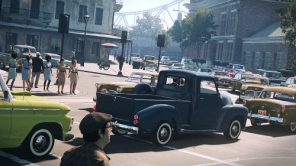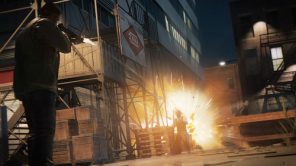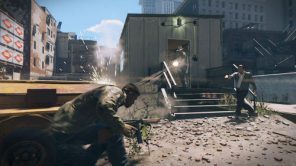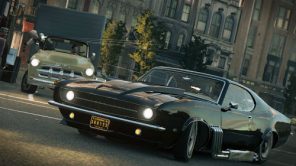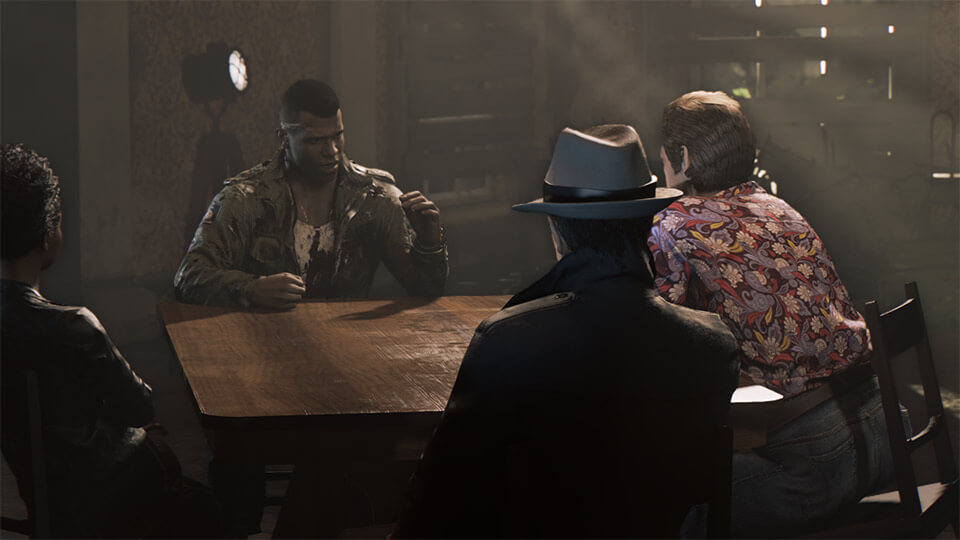
One hour with 2K Games’ Mafia III
During a recent one hour guided hands-on demo I had with Mafia III, what impressed me the most is the game’s commanding sense of believability. Every square inch of the fictitious town of New Bordeaux (modelled after 1960’s New Orleans), and the cast of larger-than-life characters that inhabit it, felt purposeful and alive—without the extraneous padding often found in large open-world games. It’s this rigorous attention to detail and focused gameplay that could very well make Mafia III a runaway hit during this busy fall season.
Walking me through the Mafia III demo was veteran game designer Haden Blackman, best known for his lengthy tenure with LucasArts that included project lead on both Star Wars: The Force Unleashed games. In 2014, he founded Hangar 13, the newest game development studio at 2K, and began work on Mafia III. 2K Czech, the creators of the first two Mafia games are working very close with Blackman and his team to support the project.
A 1960’s southern U.S. setting
Blackman began by telling me that while the previous Mafia games were set during the early, often romanticized golden era of organized crime, Mafia III turns the clock forward to 1968, a time in US history when the mob’s influence and power was starting to dwindle. You play the role of Lincoln Clay, a discharged Vietnam War fighter who’s lived a tough life on the streets and falls in with the Black Mob upon his return to New Bordeaux. However, the Italian Mob, led by crime head Sal Marcano, backstabs Clay’s family and has them killed—but Clay escapes alive and now he’s out for revenge.
A new “family” emerges
Fighting fire with fire, Clay decides to form his own mob with the specific intent to weaken Marcano’s stranglehold on the city, one district at a time. To help him out, Clay recruits three underbosses that all have a personal vendetta against Marcano: Vito Scaletta, whom Mafia fans will recognize from the previous game, Thomas Burke, a boisterous Irishman who was once loyal to Marcano but now wants to see him destroyed, and Cassandra, a Haitian mob leader who’s been trying to get a foothold in the city for months.
Your crime crew come into play in several different way as your progress through the game. At any time you can call over a weapons dealer to load up on a variety of guns, replenish ammo, or stock up on Molotov cocktails. If you’re in a need of a ride, you can call upon a valet who will deliver a car right to your feet. And if you need extra firepower, the Irish mob will happily send over a squad of their henchmen to provide support fire, or distract your enemies while you infiltrate further.
Take down district crime bosses
The particular objective Blackman had me take on was to weaken local construction racket in New Bordeaux’s Downtown core, and eventually take down the district’s crime lord, a money-hungry bookie named Tony Derazio. There were several different ways I could undermine Derazio’s influence, including taking out enforcers protecting his operations, blowing up his delivery trucks, or simply invade his goons’ hideouts and loot them.
Some bigger missions were also available that could inflict heavier damage on Derazio’s business, such as sneaking into one of his construction zones and detonating explosives to take down a massive crane. The cool thing is that before every mission you can view the impact it’ll have on the district crime boss’ bottom line, and there are definite trade-offs between risk and reward. No matter which mission you take on though, you can guarantee that it’ll advance the story further, as even petty crimes will whittle away your opponent bit by bit.
Play your way
I mentioned before about how much attention went into creating New Bordeaux, and the many different ways you can approach missions really drives this idea home. The culmination of my journey to take down Derazio led me to his heavily guarded penthouse, and Blackman went over numerous different ways of tackling this, from running in guns blazing, to sneaking through the underground parking garage, or entering through the concealed side gate. I chose the last option, and to help me make my move to Derazio’s upper loft, I called in a trio of friendly mobsters to take care of the henchmen scattered on the lower floor.
At first I was relying on Mafia III’s new stealth mechanics that let you stick to walls and avoid being seen, but after being spotted the situation escalated fast and a frantic gunfight ensued. Just when I thought I had the upper hand in the fight, one of Derazio’s goons called for backup and I was back into another heated exchange of bullets across multiple floors in the building. The final showdown with Derazio was equal parts exhilarating and nail-biting as I was low on health and ammo, finally though I managed to disarm him. With the crime boss at my mercy I was given a choice: off him on the spot, or force him to join my family to bolster my power. Considering his corrupt nature and the fact that he just to kill me, I decided to put him out of his misery, and act that surprised Blackman as he said I was first person that day to not spare his life.
Divvy up controlled areas
What I found even more interesting was that following this moment, I got a glimpse at Mafia III‘s larger strategy element. Once you’ve seized control of a district, you’ll have a sit-down meeting with your capos where each will lay claim to the area and tell you why they deserve it. Each underboss will reward you in different ways for giving them control of the district, with Burke offering greater backup in combat, Vito coaxing you with better weapons and items, and Cassandra persuading you with more control over combat spaces, such as her cutting phone lines to prevent goons from calling reinforcements.
Blackman told me in these situations it’s not as simple as picking whomever has the best offer and head off to the next district—like real mafiosos, if start to show favourtism to one underboss, the others opinion of you could turn sour. While I didn’t get to possible scenarios in action, Blackman was implying that there could be consequences for putting too much territory in one underboss’ hands.
From my brief time with Mafia III, I must say I’m really impressed with what Blackman and team have put together. What I’ve seen so far of New Bordeaux is richly detailed and authentic for the time period, and I love that the development team has gone so far as to include classic 1960’s muscle cars (all the rage at the time) and an incredible era-appropriate soundtrack with over 100 songs. While cruising around the city I got to listen to classics like “Respect” by Aretha Franklin, “Help Me Rhonda” by the Beach Boys, and “Ring of Fire” by Johnny Cash; I can’t wait to see what other surprises are in the final game.
Stay tuned for a full review of Mafia III soon here on the Plug-In Blog!

